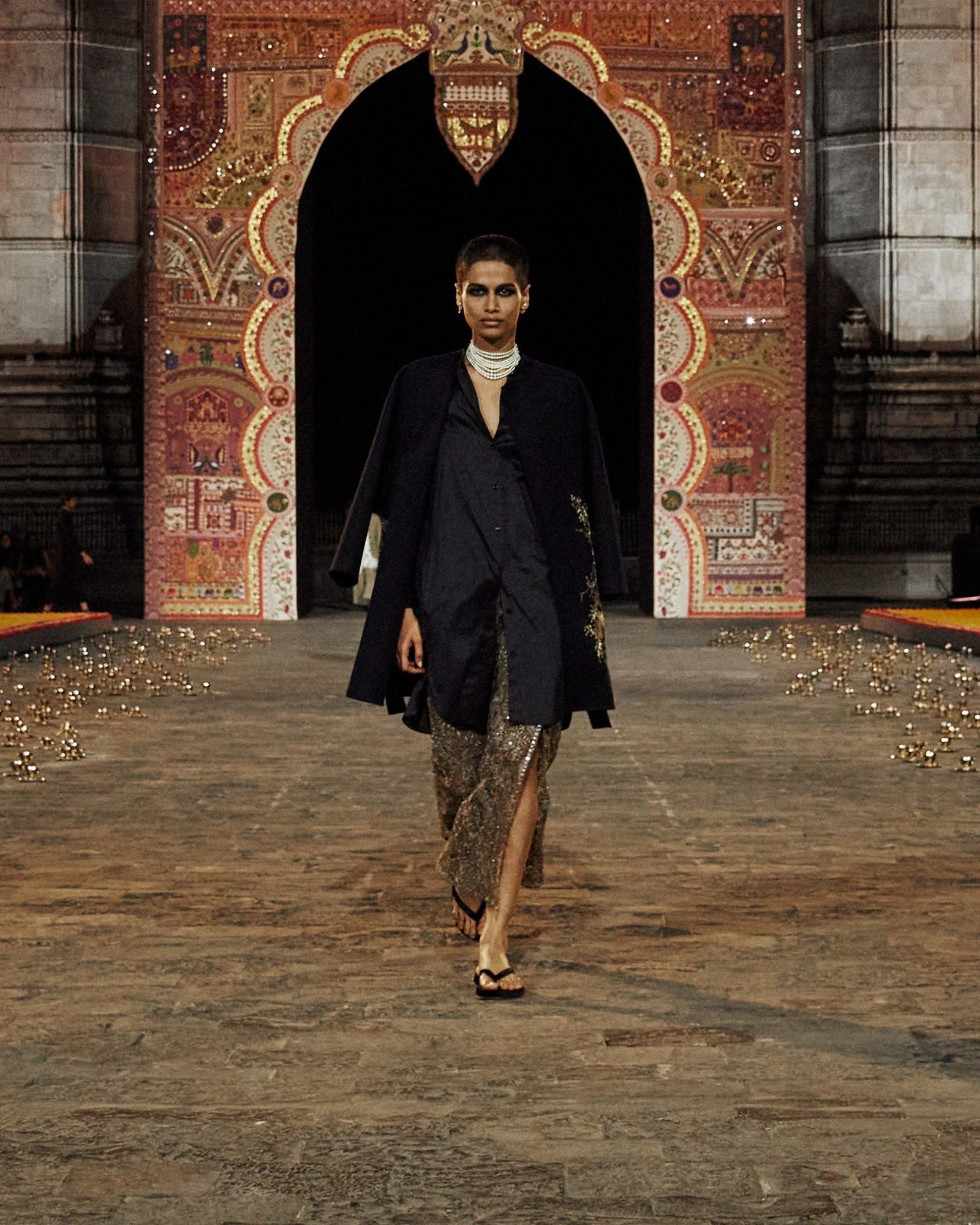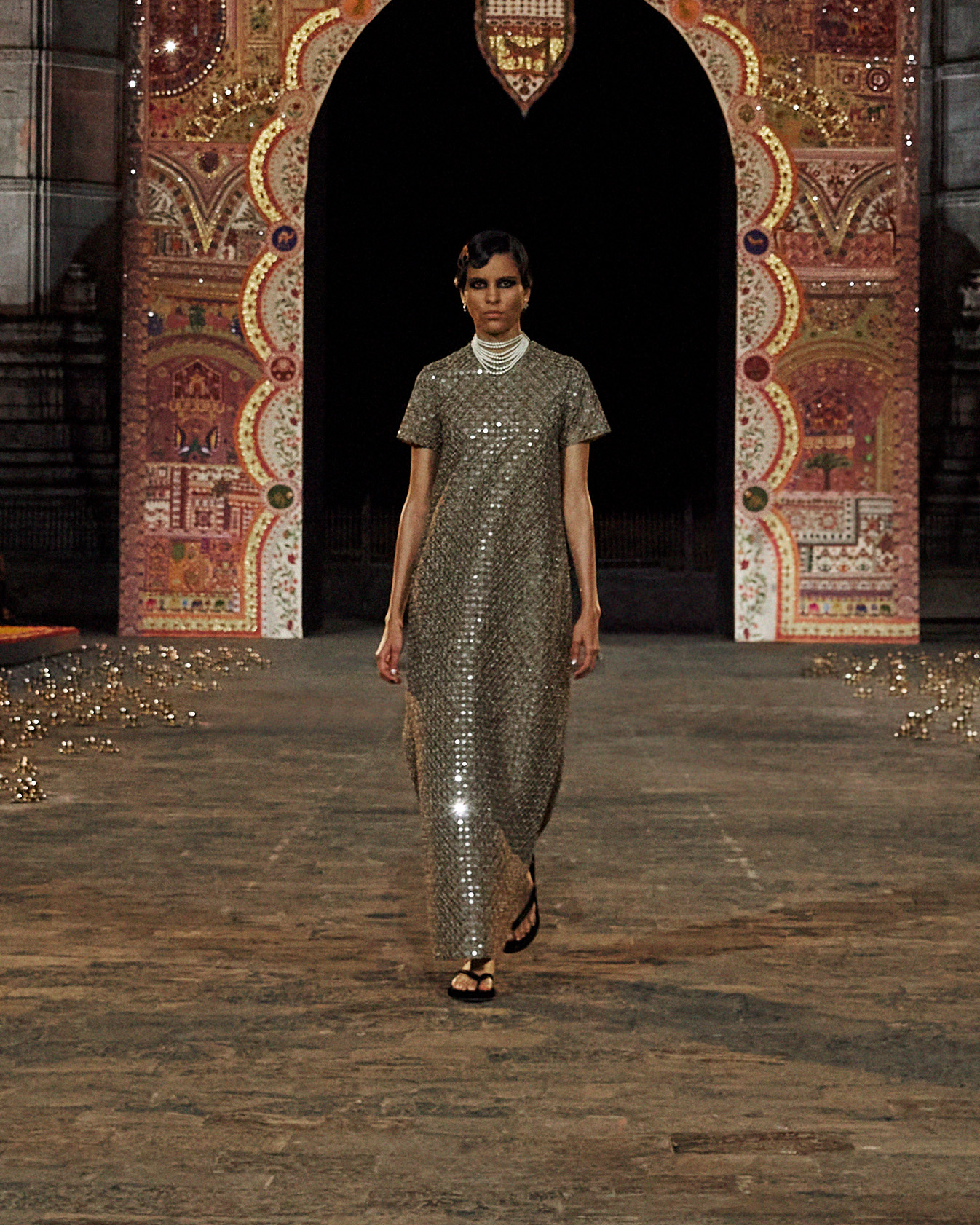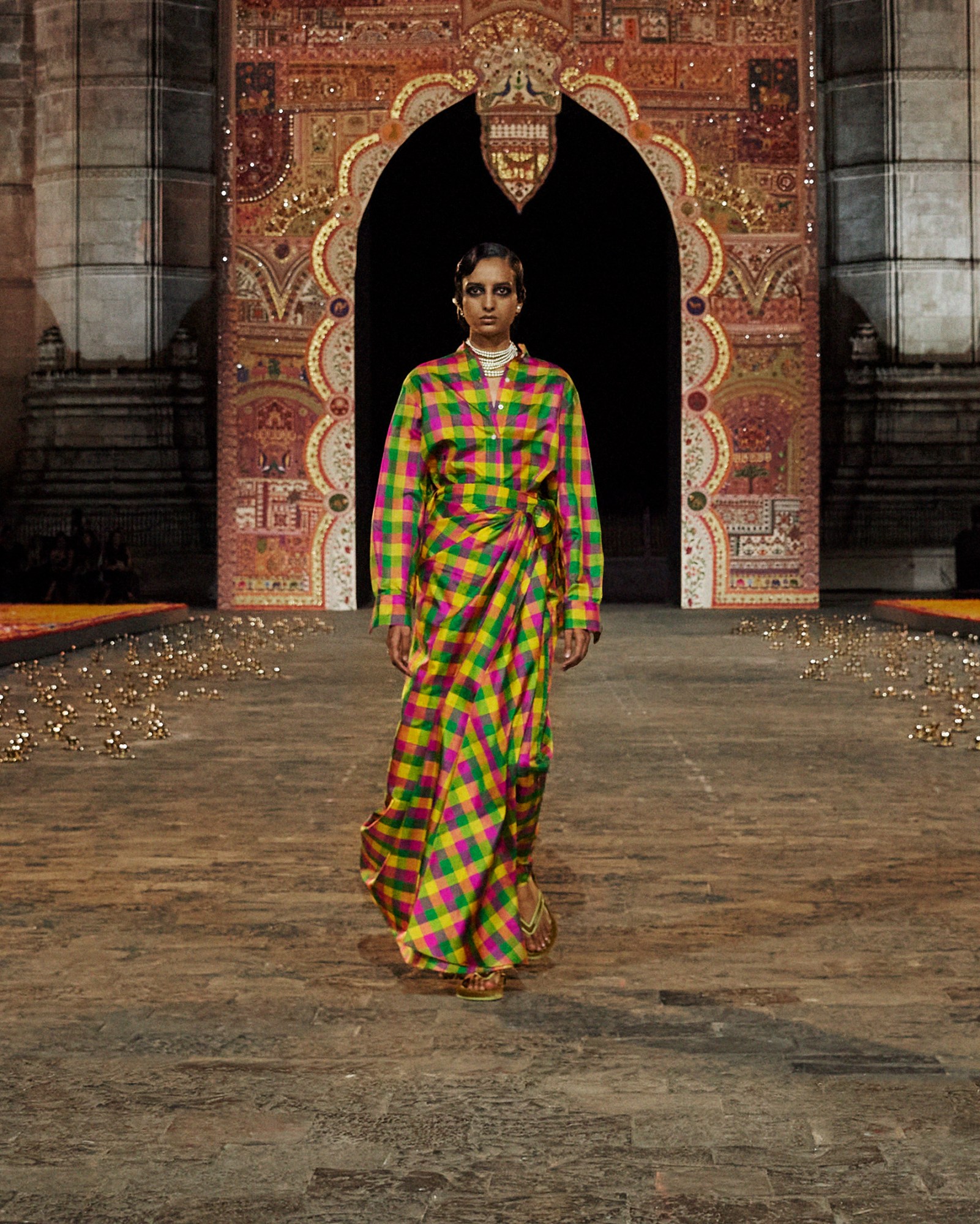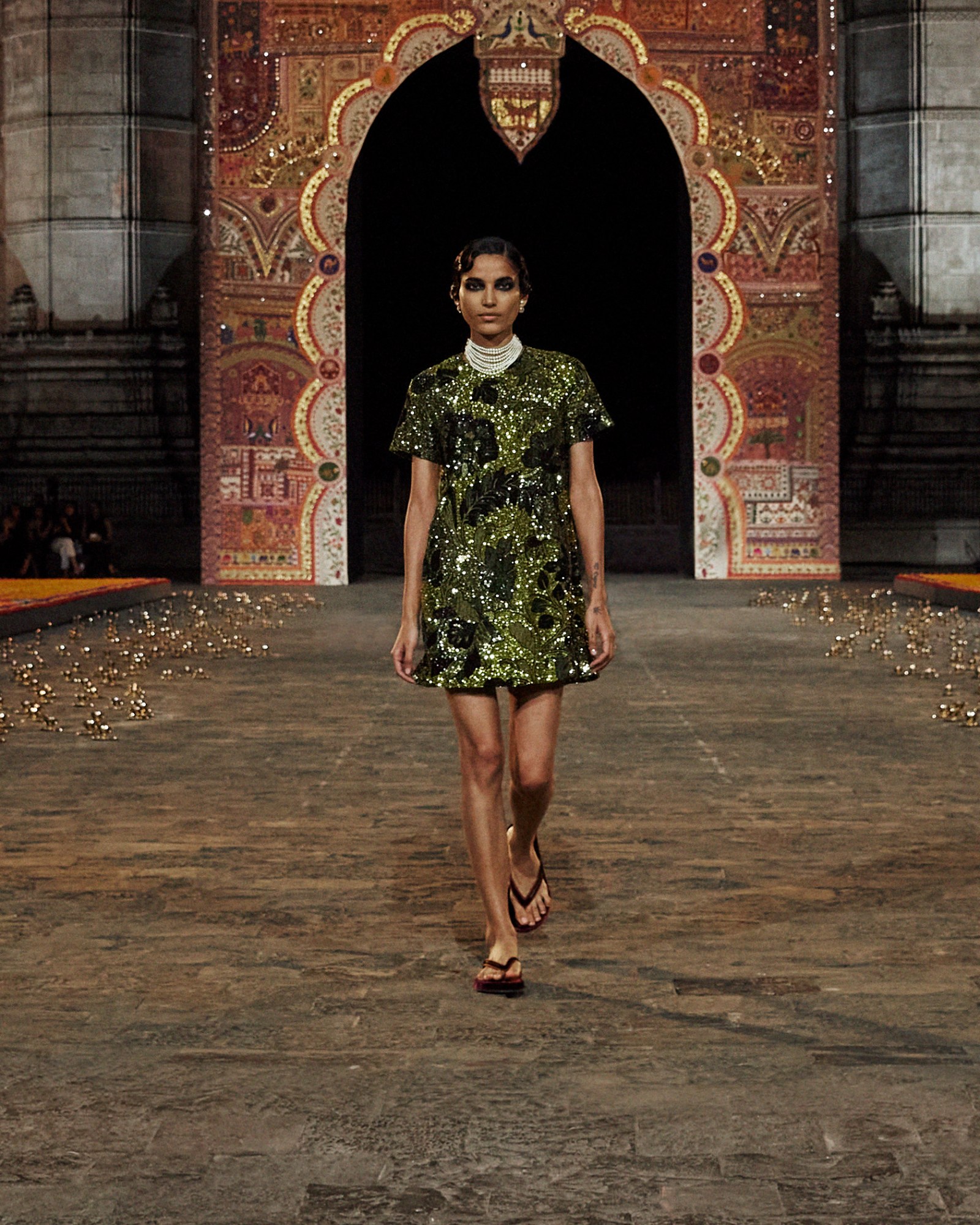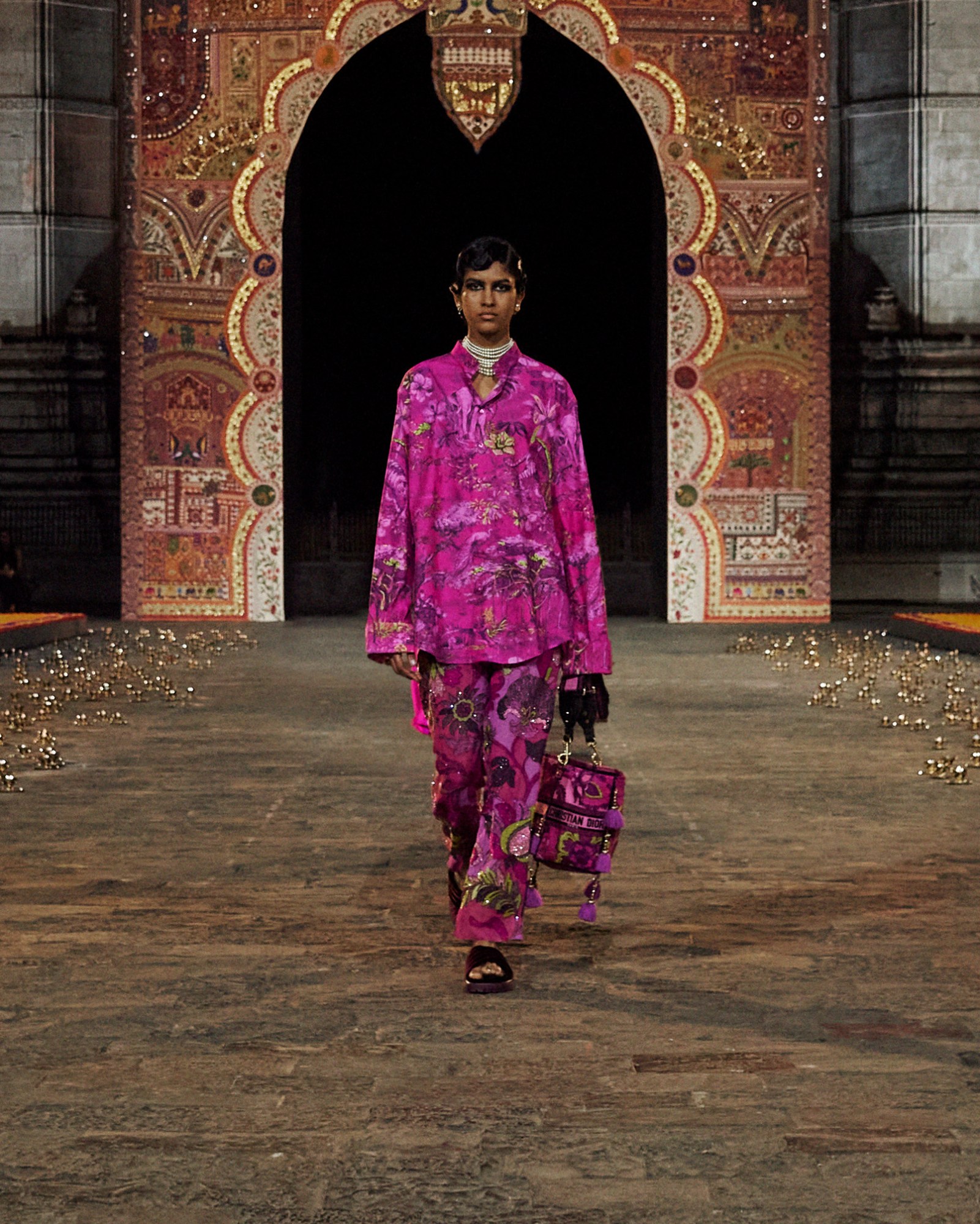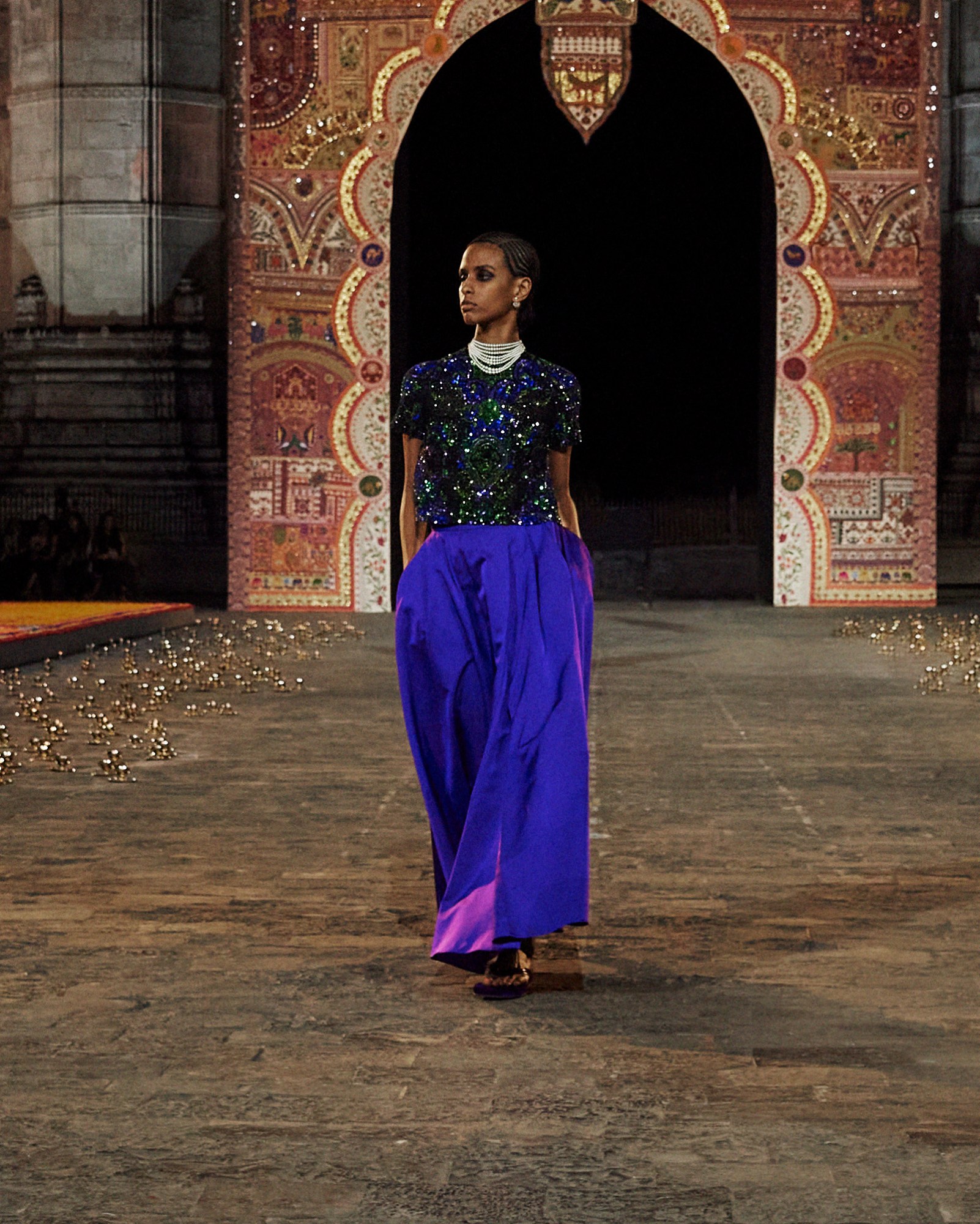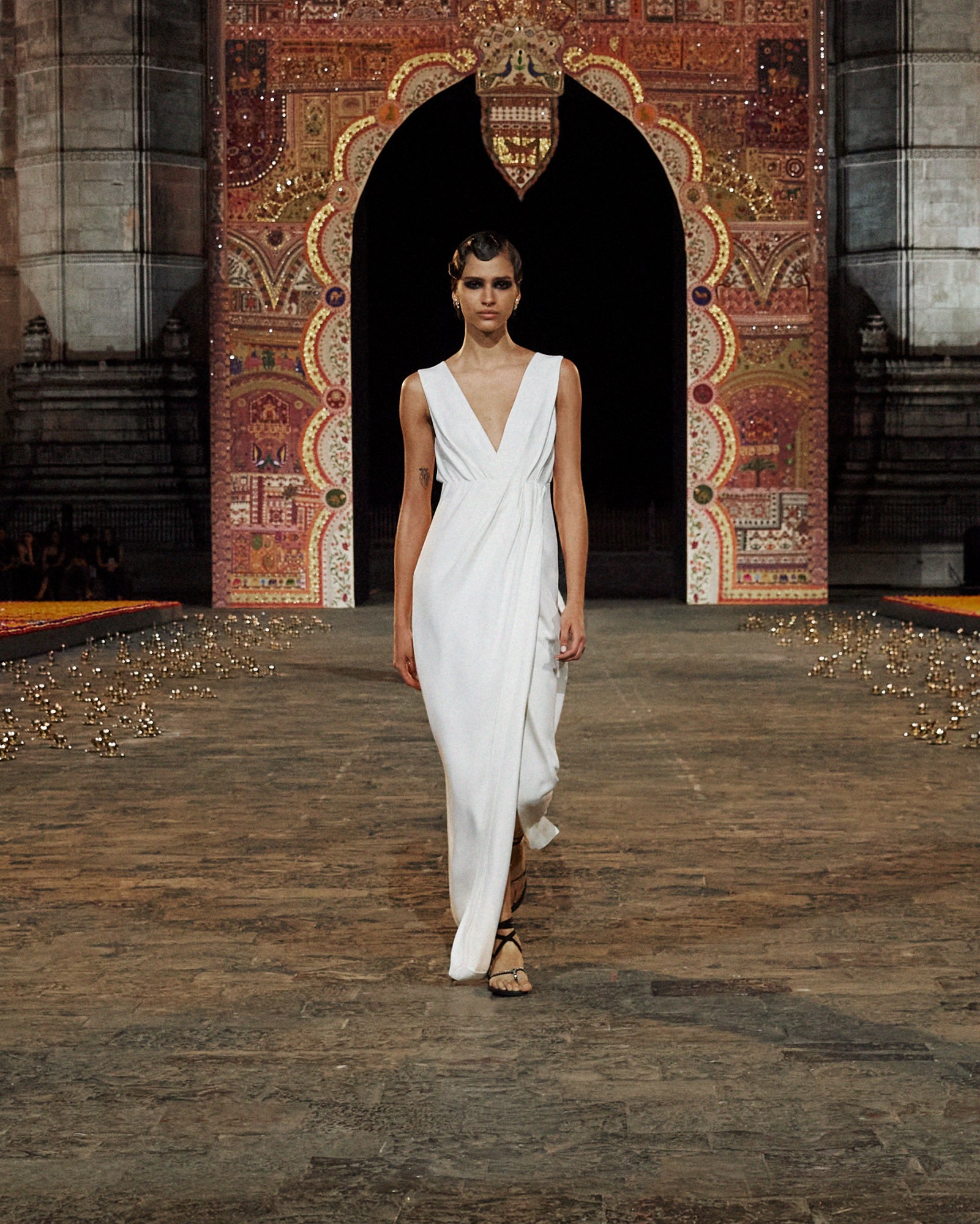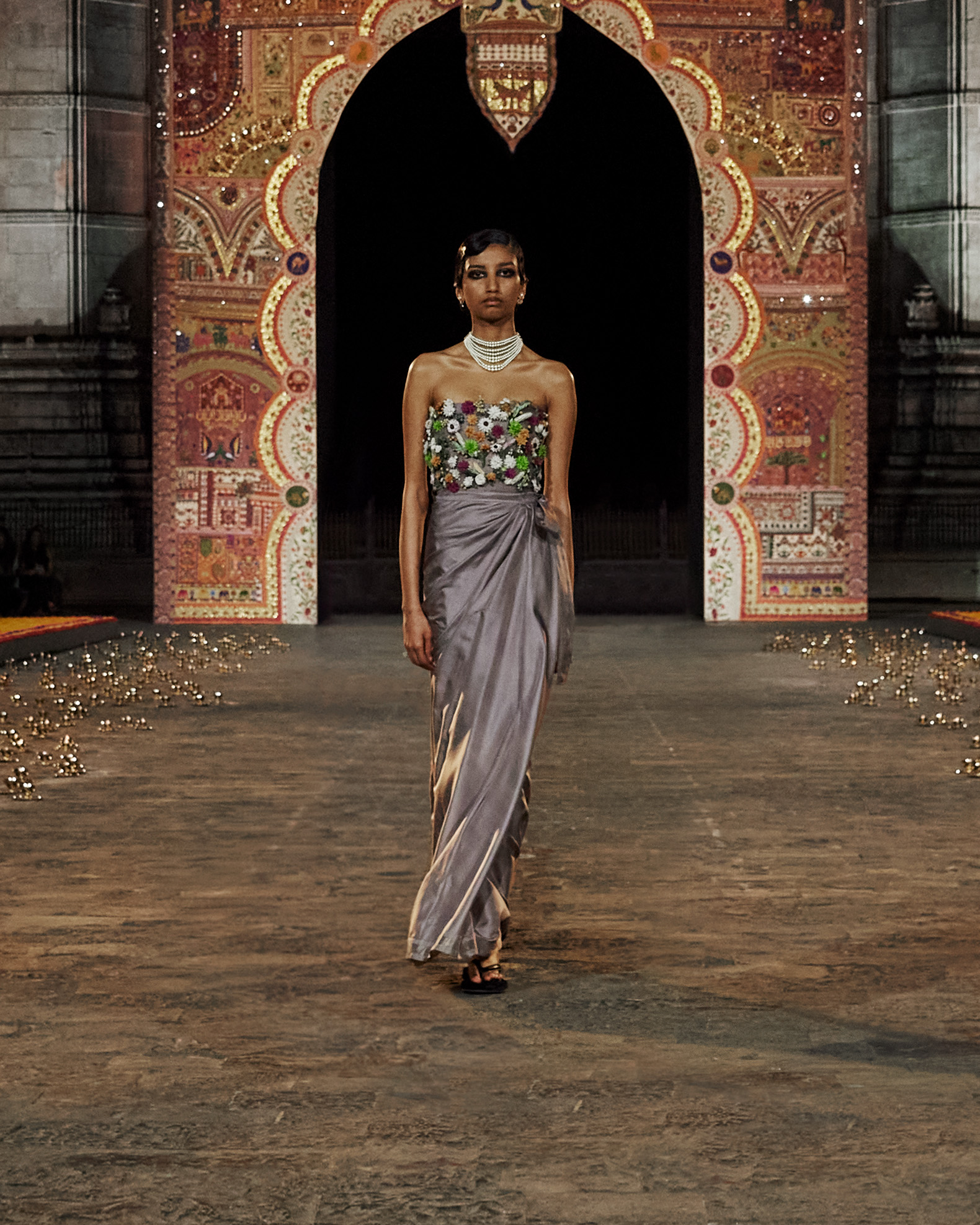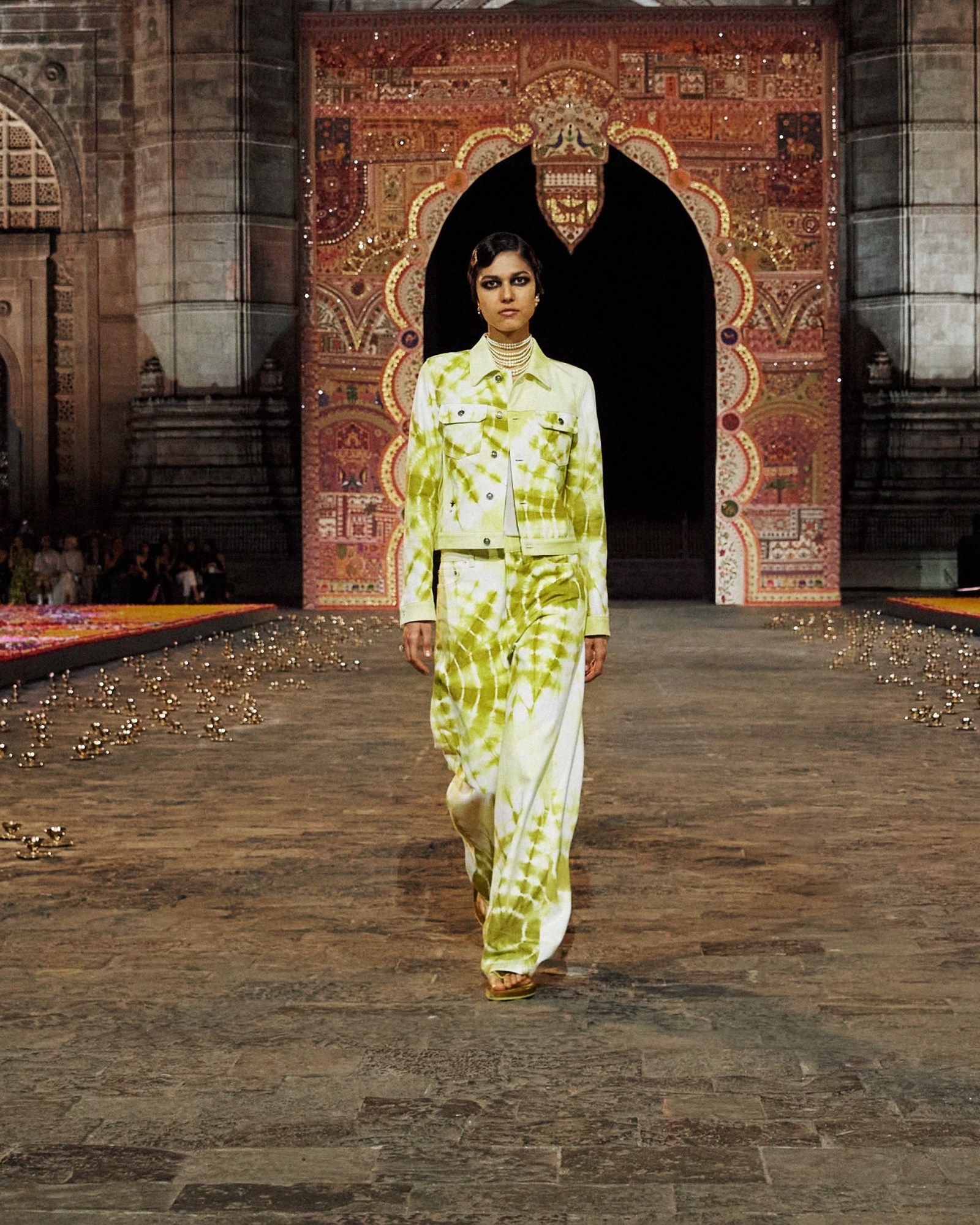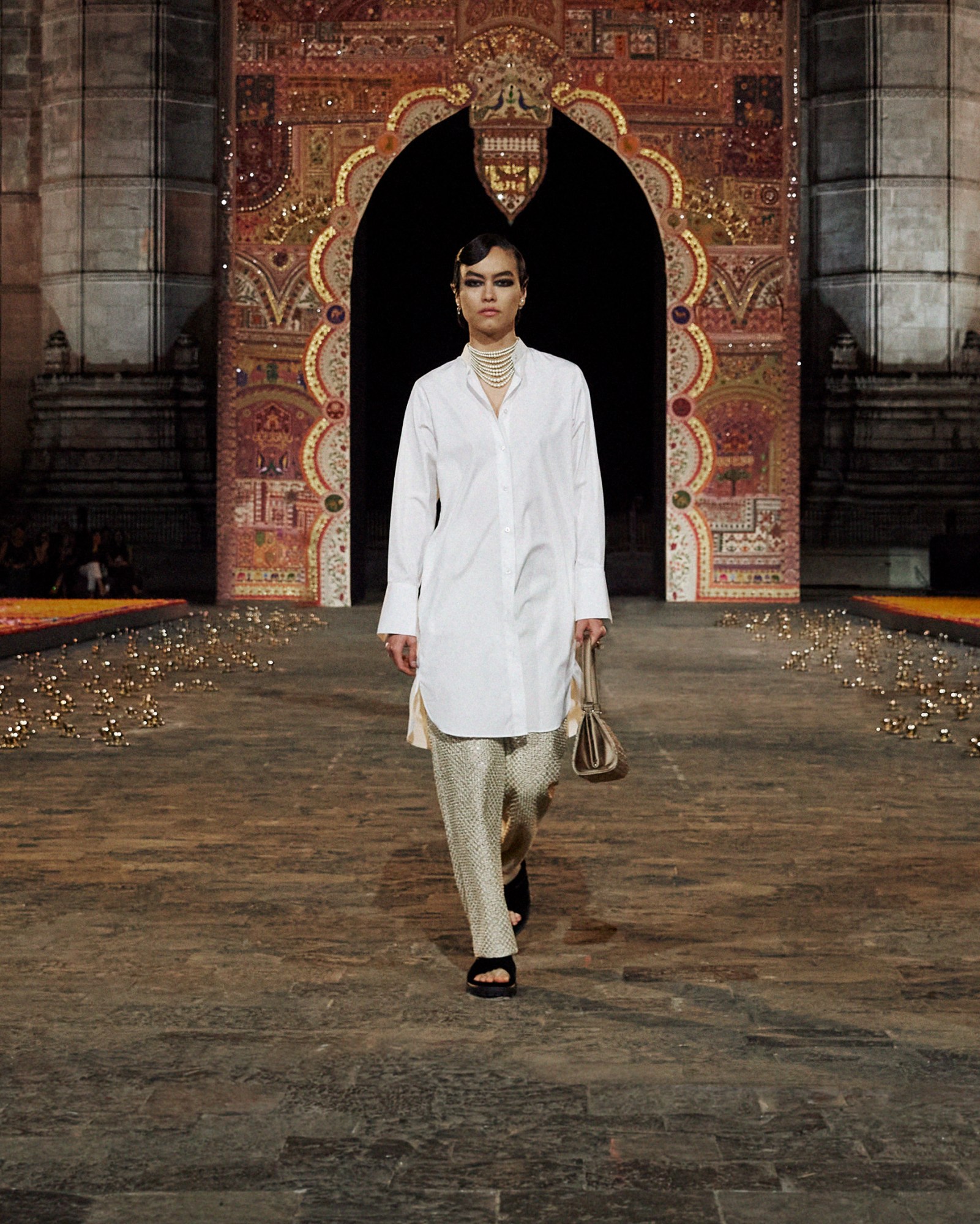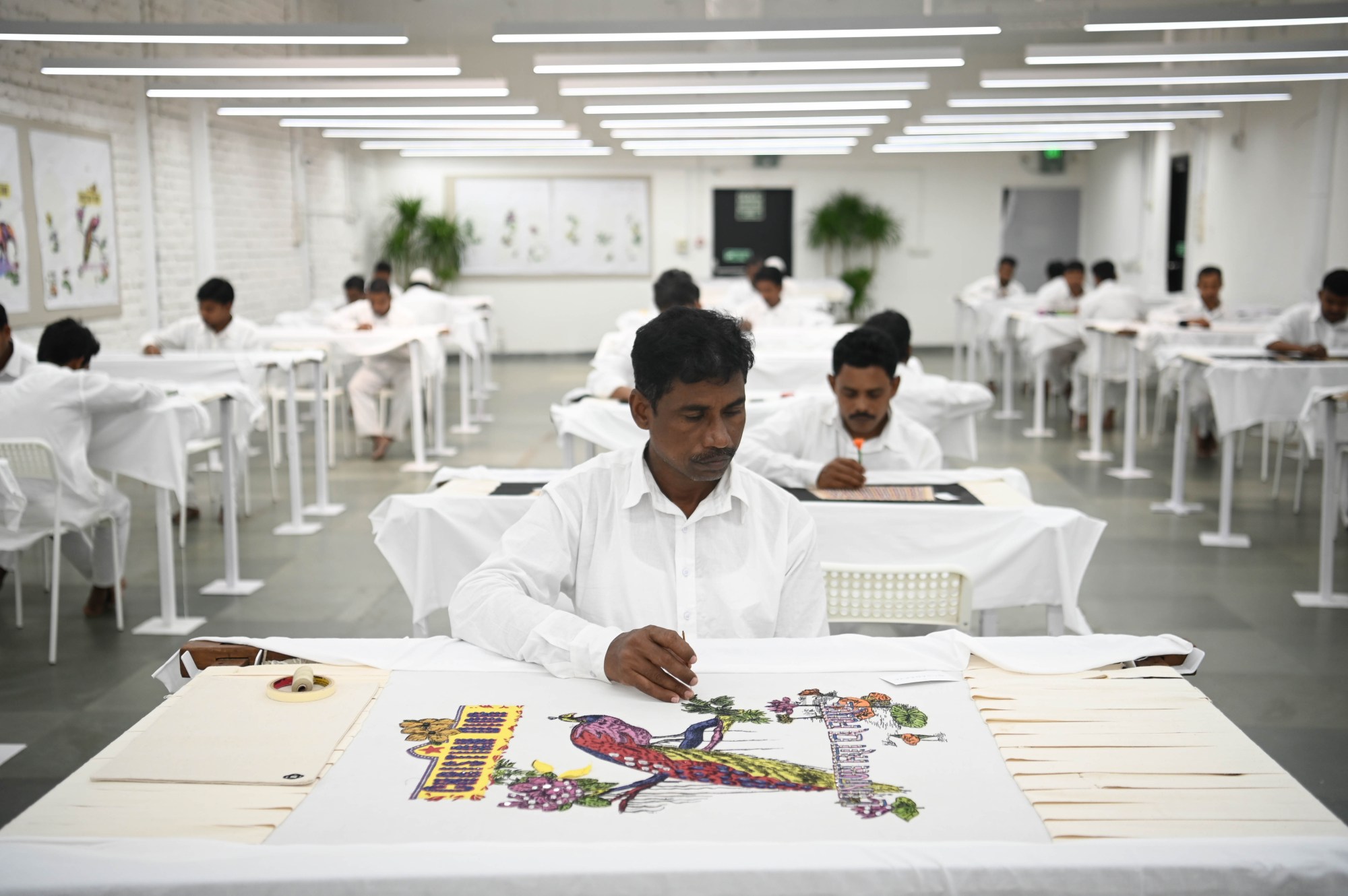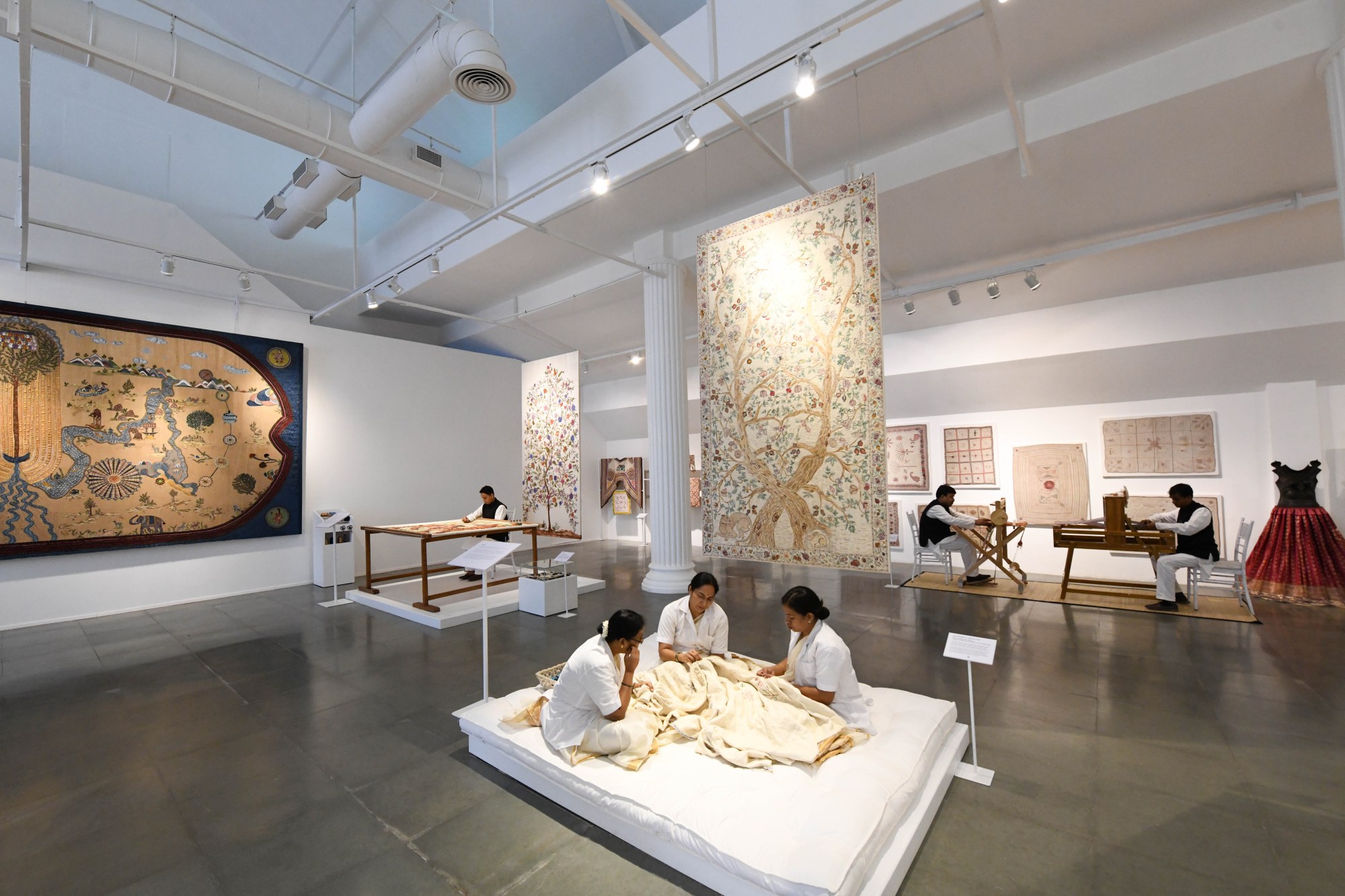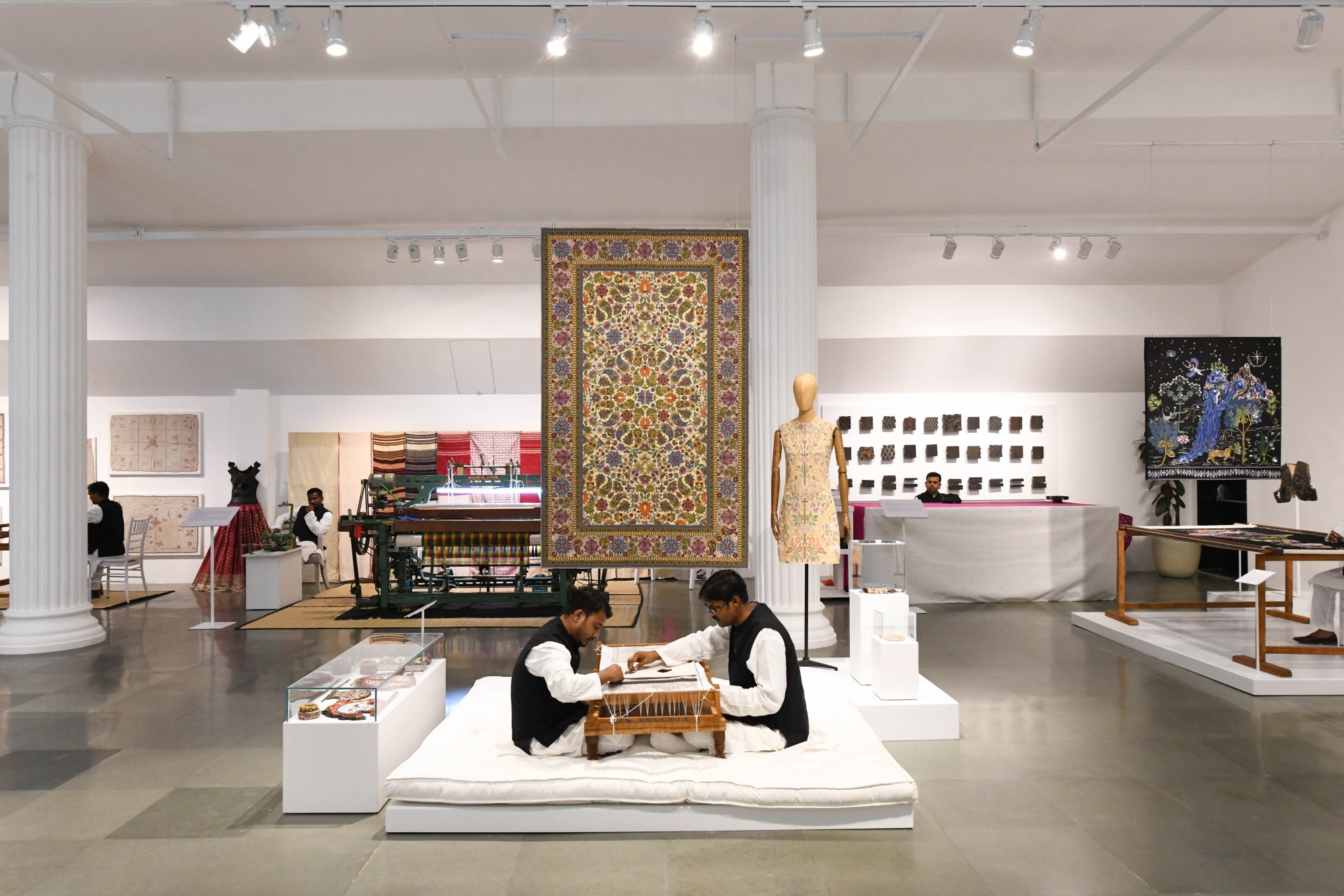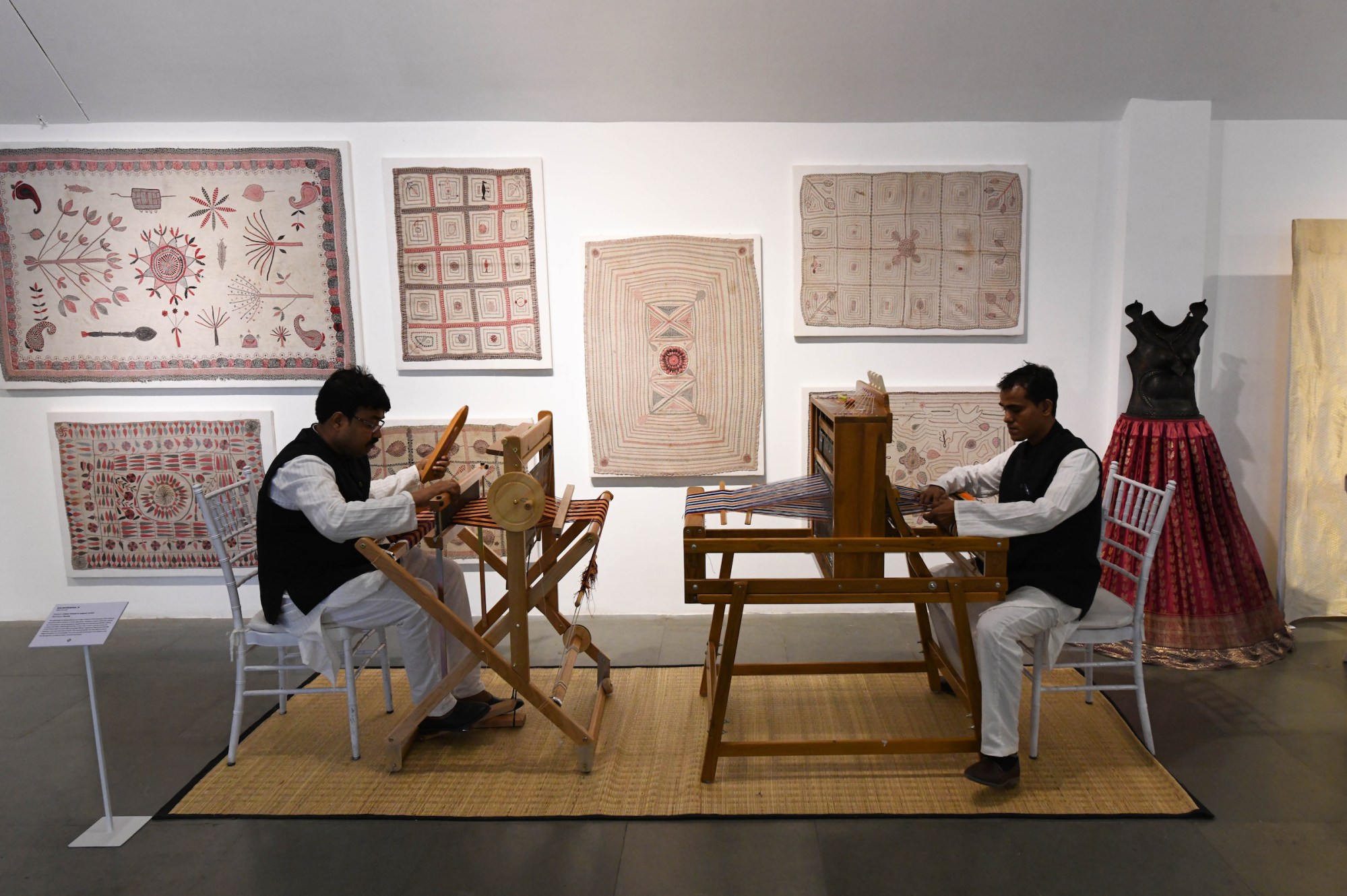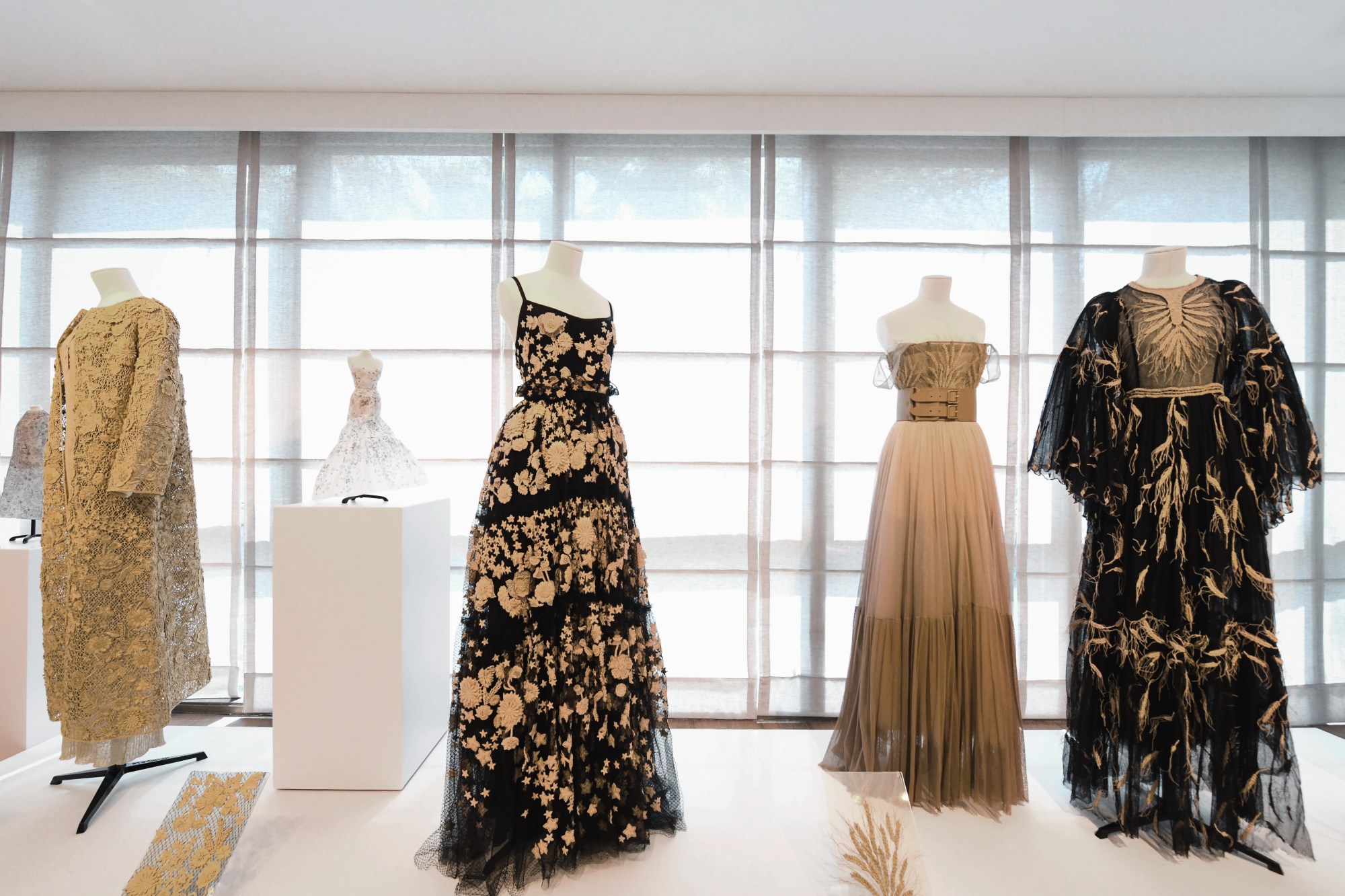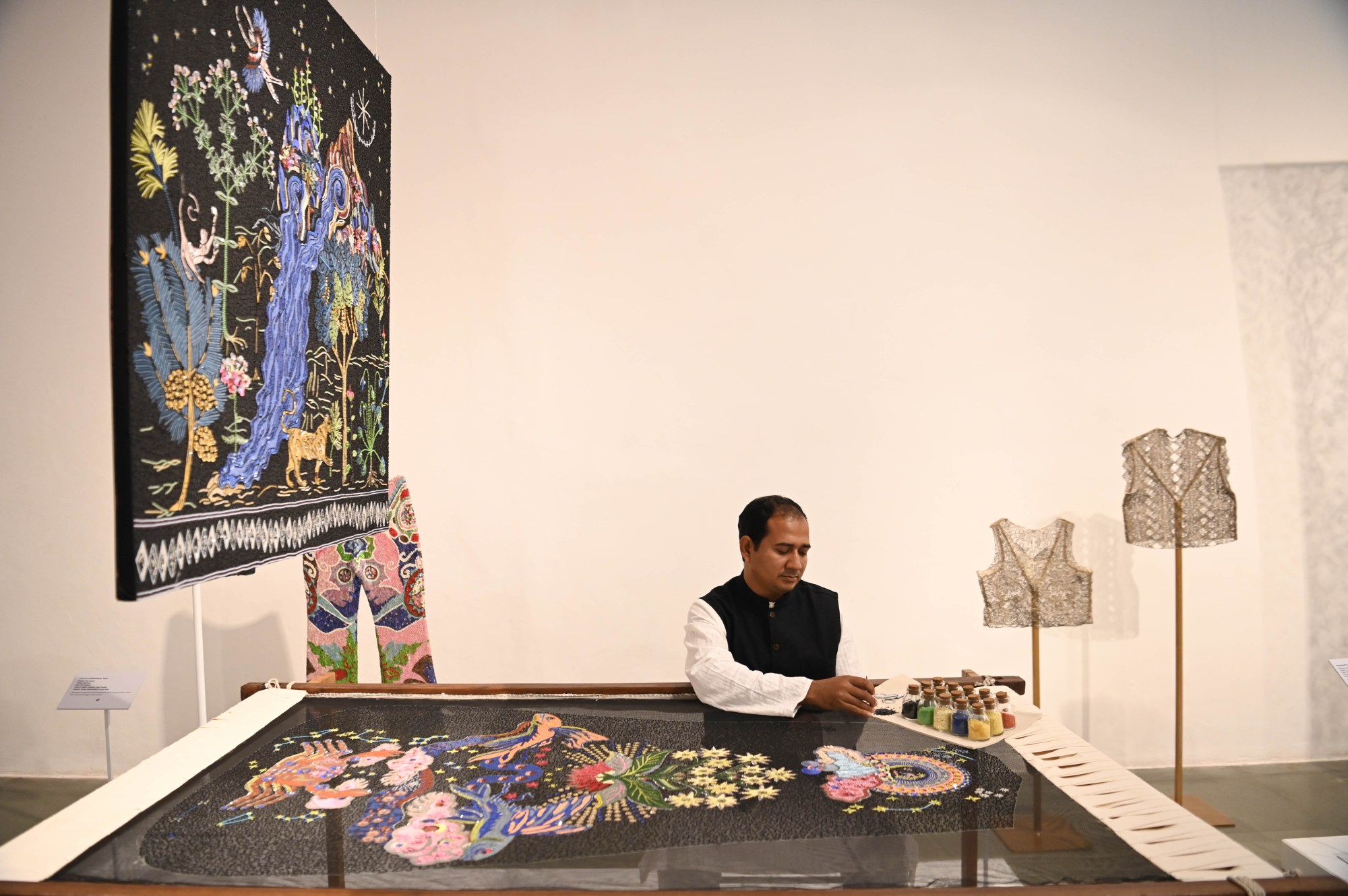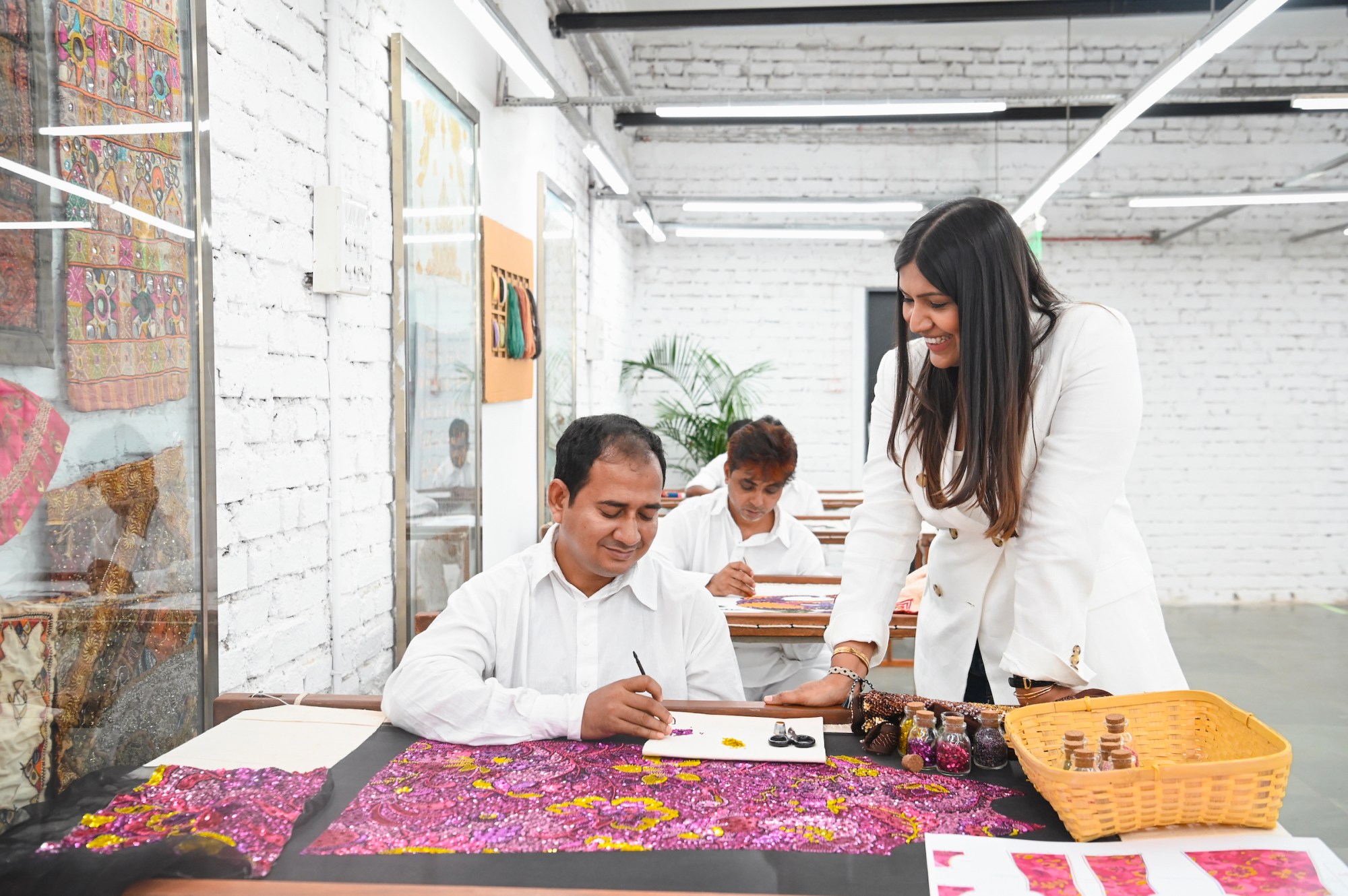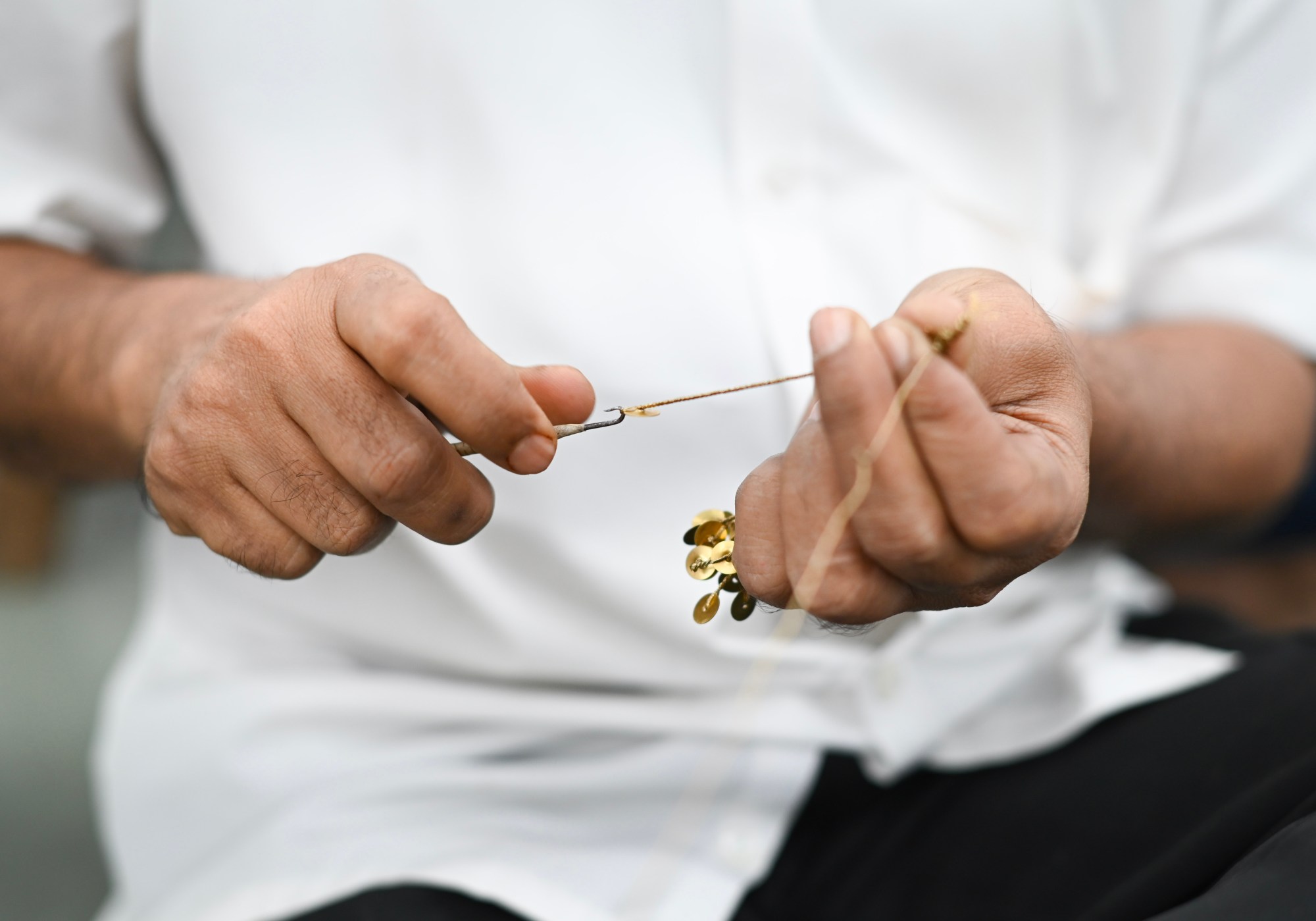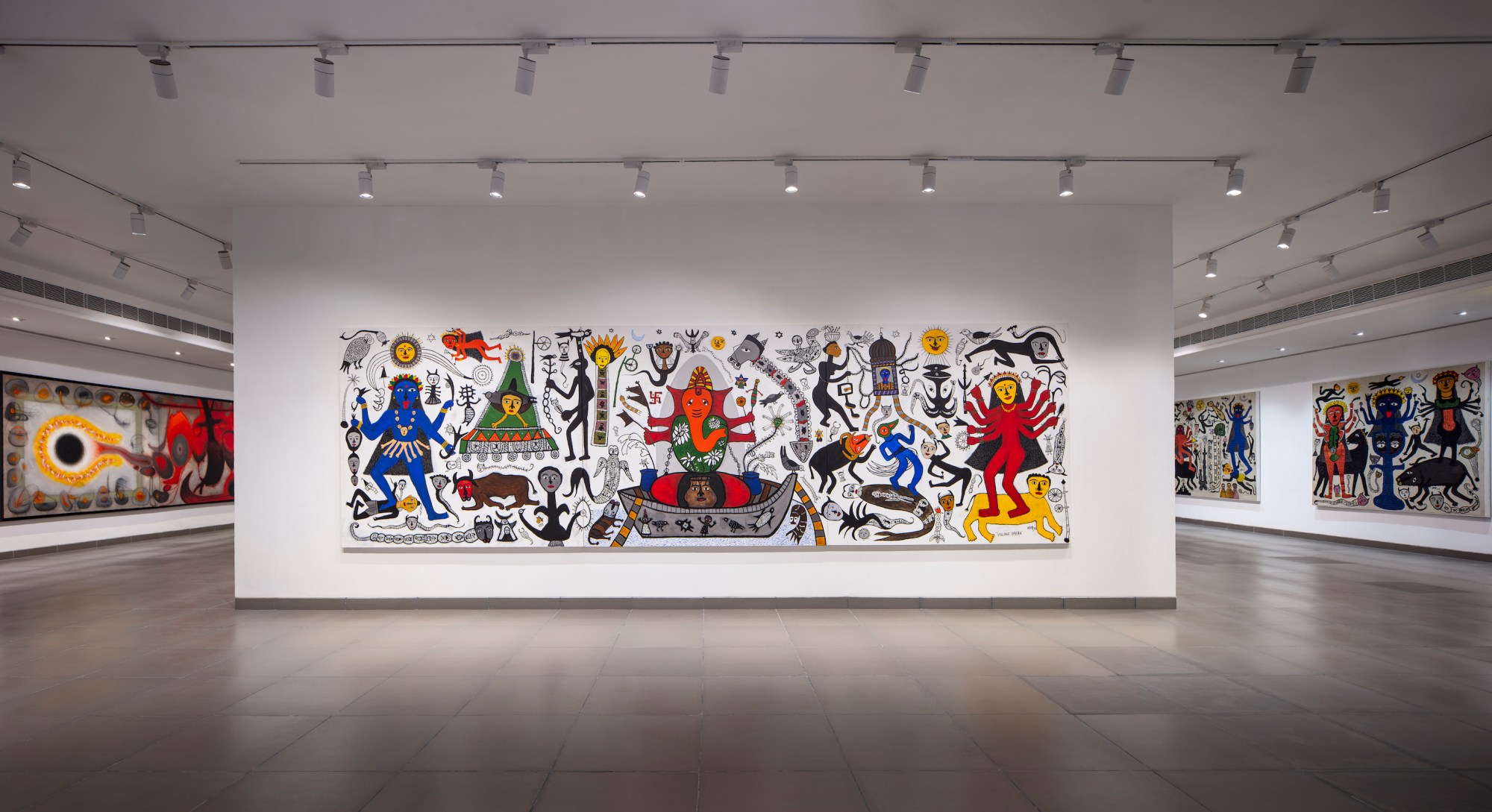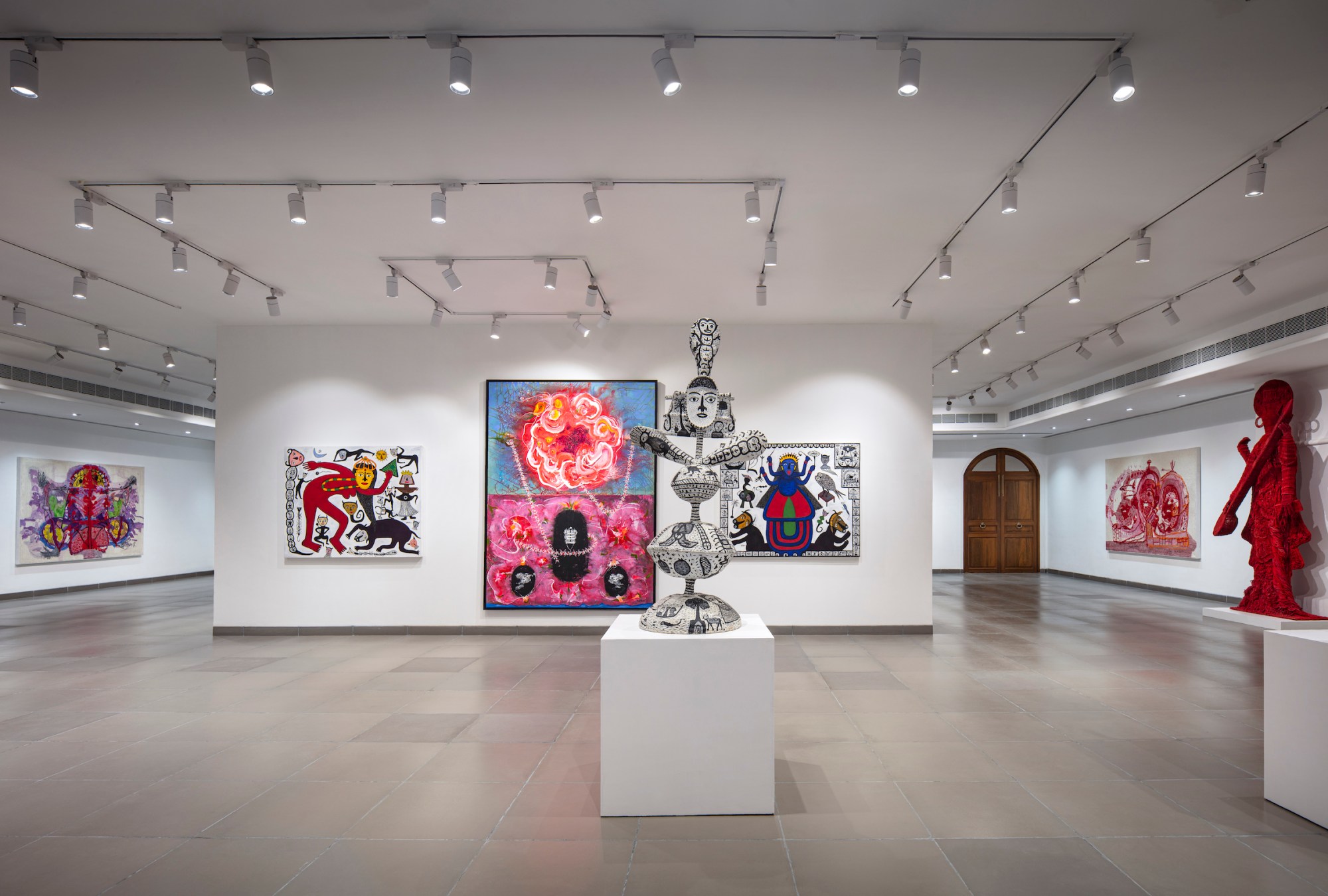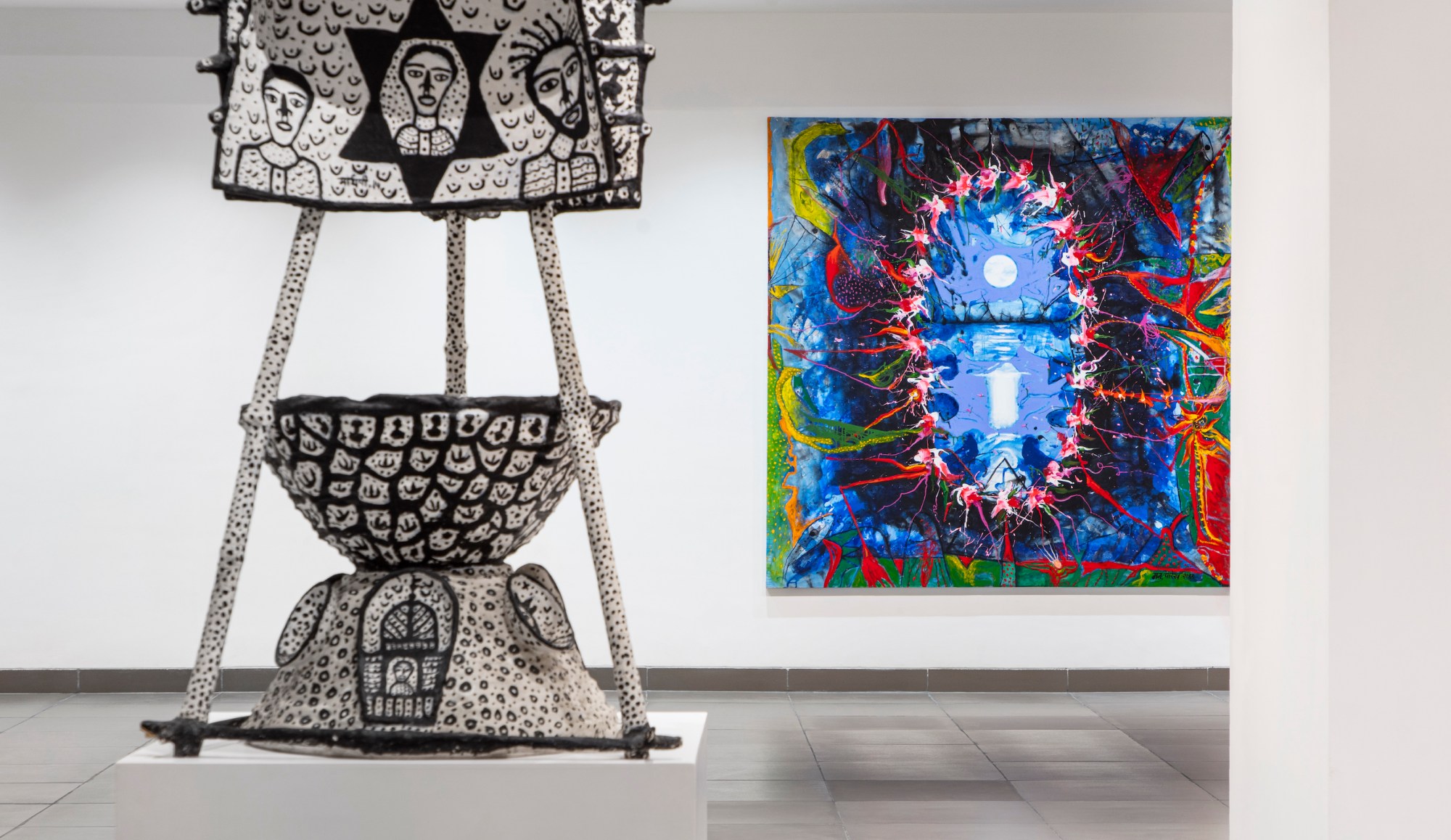Historical and monumental, the Gateway of India was built on the bay of Mumbai in 1904 to welcome Britain’s then king and queen on their visit to the country. It goes without saying that a lot has changed since then. Once a symbol of colonialism, the Gujarati-style arch today serves as a reminder of India’s influence and standing as a global superpower, which is why it is the city’s most-visited attraction. Yesterday marked the first time a fashion show has been staged at the landmark. Who could manage to land that coup? Dior, of course. One of the most emblematic couture houses in the world, Dior brought the international fashion community to the colourful shores of Mumbai, a city where the ancient collides with the contemporary; street food vendors and skyscrapers sit alongside Victorian gothic architecture and minarets along the coastal skyline.
Of course, India has provided a backdrop — often ornamentally – for French couture for centuries. Empress Josephine wore Kashmiri shawls. Verusckha posed in Hindu temples in the 60s, the era during which Diana Vreeland famously proclaimed that “pink is the navy blue of India” and Dior’s then creative director, Marc Bohan, staged the first Dior shows in India, in Delhi and Bombay. As legend has it, Christian Dior and Marc Bohan both looked to the drape of saris as inspiration for the satin ball gowns — just as John Galliano did for his blue-faced exploration of Indian deities for Dior in 2003. However, viewed through the lens of today’s hyper-sensitivity to cultural appropriation, Dior’s return to India was met with cautious optimism. After all, this is a country that has seen its traditions and craftsmanship replicated and warped by years, decades of designers going on “research trips” and knocking out a few paisleys, turbans, and pink-and-orange colour combinations.
Thankfully, there wasn’t anything of the sort at this show (although there were deliciously zingy rani fuschias and tangerines throughout). Instead, Dior’s current artistic director, Maria Grazia Chiuri, made Indian craftsmanship the centrepiece of her subtly Indian-inspired collection. Quite literally, she commissioned a miniature (albeit towering) arch adorned with a patchwork of fabrics that sat in front of the Gateway to India, a recreation of a Toran, a decorative tradition woven by women that often hangs at the entrance to Indian homes. It underscored an important message in the collection. “It is made by women, and it is to say welcome, we can be together — for me the craftsmanship in India is just as important as the couture ateliers in Paris and we have a strong connection,” explained Maria Grazia backstage.
For the last few years, MGC has been unrelenting in her spotlight of Indian artisans through her collaborations with the Chanakya School of Craft, a nonprofit school which supports lower-income women embroiderers in a male-dominated field. Maria Grazia met the school’s founder, Karishma Swali, in 1995 during her time at Fendi, and they have remained collaborators since. The school’s message of female empowerment and education offered — to borrow from the Hindi language — a moment of kismet in alignment with her vision of Dior as matriarchal hub of female art and craft. As her T-shirts once famously proclaimed: we should all be feminists, which Maria Grazia and Karishma believe should be applied to everyday workers just as it is to Hollywood stars.
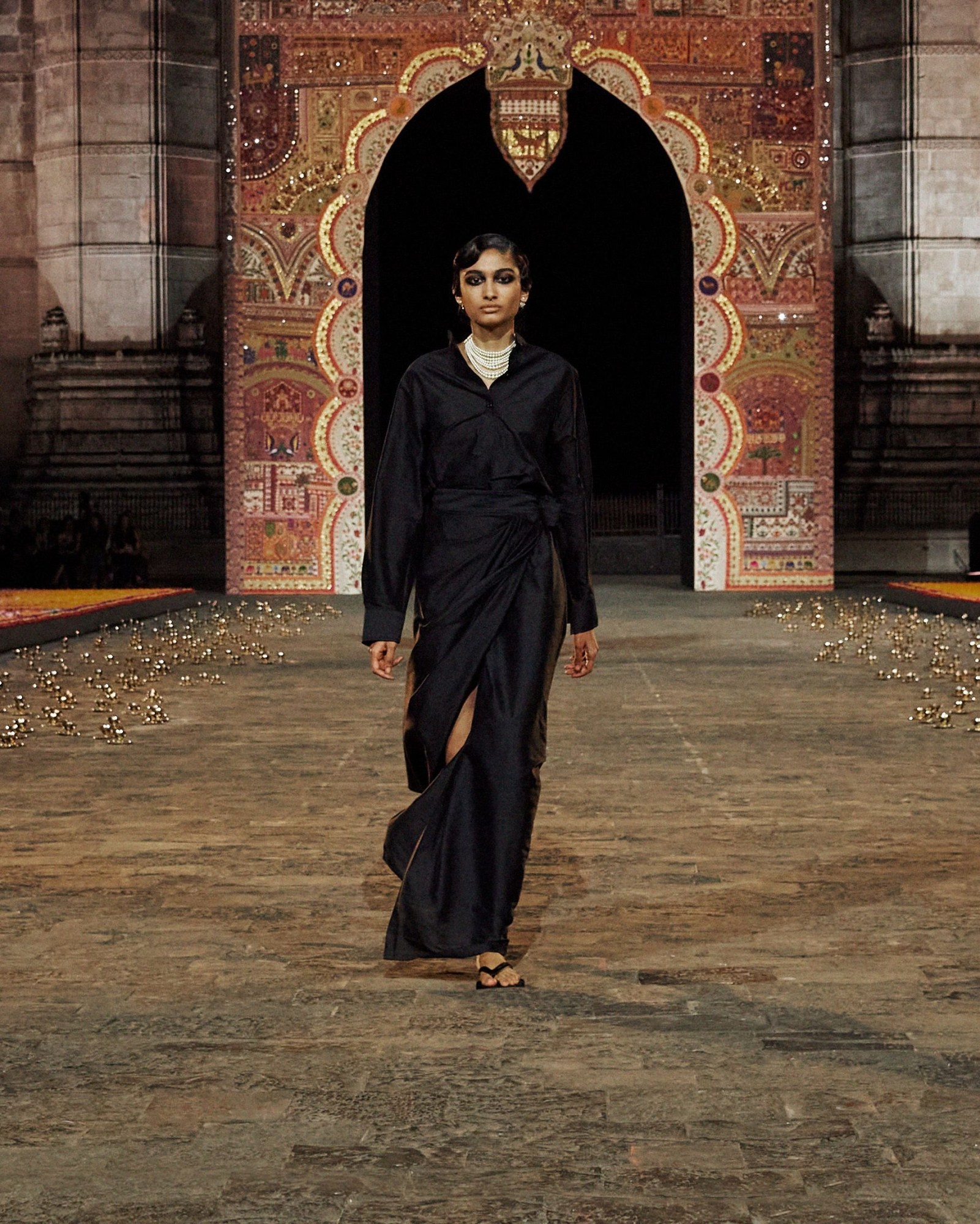
Working with the embroiderers on a daily basis — on the embroidery of everything from colossal installations by artists such as Judy Chicago and Mickalene Thomas to the lilliputian Lady Dior bags and embroideries on Dior’s ready-to-wear — it was a given that Maria Grazia double down on the Chanakya ateliers for this collection. “When I arrived at Dior, after one week I visited the factories, because I can’t work in any other way – even if they found it strange that a designer would be in a factory,” she explained backstage. “The idea was to work in a pure line.” The French are famously patriotic, even snobby about the superiority of their ateliers, but Maria Grazia (an Italian) realised long ago that the strength of Indian’s craftsmanship is how varied it is with a million different techniques and handcrafts that vary from region to region, constantly shifting in appearance according to local customs and the creativity of the craftspeople. At the Chanakya School of Craft, they all come under one roof.
The collection opened with black saree-draped skirts, open at the side, worn with blousy kurta-style shirts, and progressed into vibrant silk dresses and bandeaus woven in the southern state of Tamil Nadu. There was a Nehru-collared Bar jacket (this is Dior, after all), dove-grey coats resplendent in Rajasthani Sisha mirrorwork, violet and pink Bandhani tie-dyed denim, ornate Zardozi embellishments that glistened against the glow of the candlelit catwalk, and filigree Parsi Zari lace, delicately woven from metal threads. A handful of pyjama looks came in what Dior calls its ‘Jardin Indien’ toile de jouy printed with tigers, peacocks, and banyan trees (toile de jouy is in fact an exchange of French and Indian influences that dates back centuries to the west’s admiration of Indian cotton chintz imports, and most of these techniques are the result of centuries of migration and trade routes.) The predominantly Indian models had their hair styled in 1920s waves (Mumbai has the second largest density of Art Deco architecture, after Miami) and ropes of pearls in homage to the Maharani Gayatari Devi, an icon of Indian style. Generally, however, the clothes they wore borrowed just as much from the Indian everywoman than the glittering stars of the Raj: sarees draped in the style of Nair tribeswomen and humble Madras checks worn on the streets of South India.

On her mood board backstage was an image from 1964 of Dior’s cabine of models arriving in Delhi on an Air India flight, a reminder that right from the start, Dior has been a global superbrand and an ambassador for French couture around the world. The location only echoed that sentiment — the Gateway of India was famously the first place Western visitors would encounter on arrival to the country. The audience was equally international: the legendary “Garbo of Bollywood”, Rekha, sat next to Cara Delevingne, while Indian starlets mingled with the likes of Karlie Kloss, Jessie Buckley and Simone Ashley. Local artists and designers were invited, and models were cast from Indian agencies.
At a time when the world has opened up and travelling shows and cross-cultural collaborations have become the norm in fashion — which shows signs of slowing — the house of Christian Dior is putting its money where its mood board is. Whereas in 1955, Monsieur Dior designed the asymmetric sari-inspired Soirée de Lahore dress from the comfort of his Louis Quinze salons, having never visited Pakistan, today’s globe-trotting rota of ‘on locations’ must progress to being more inclusive of the people inspiring the clothes. Designers like Maria Grazia are leading the way in recognising that more than who is wearing them, the real emphasis should be on who is making them. As a jacket embroidered by the Chanakya ateliers emblazoned with Sanskrit words in the style of a traditionally hand-painted Bollywood poster put it: “We Are Strong Together”.
